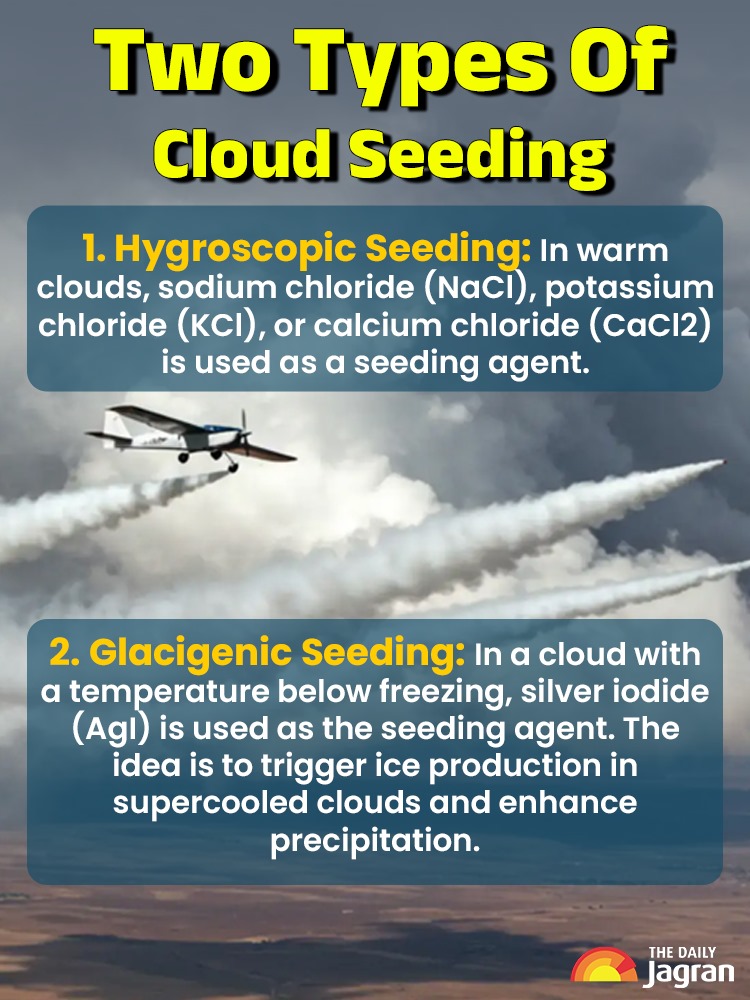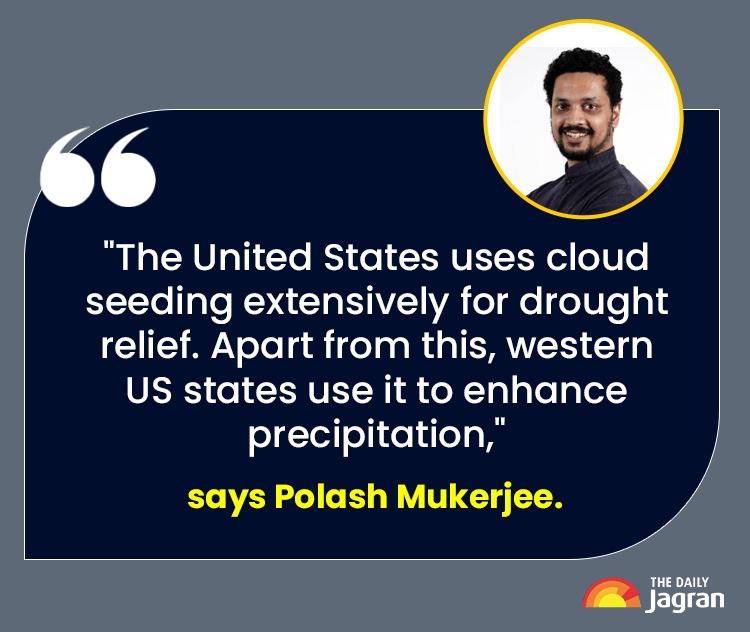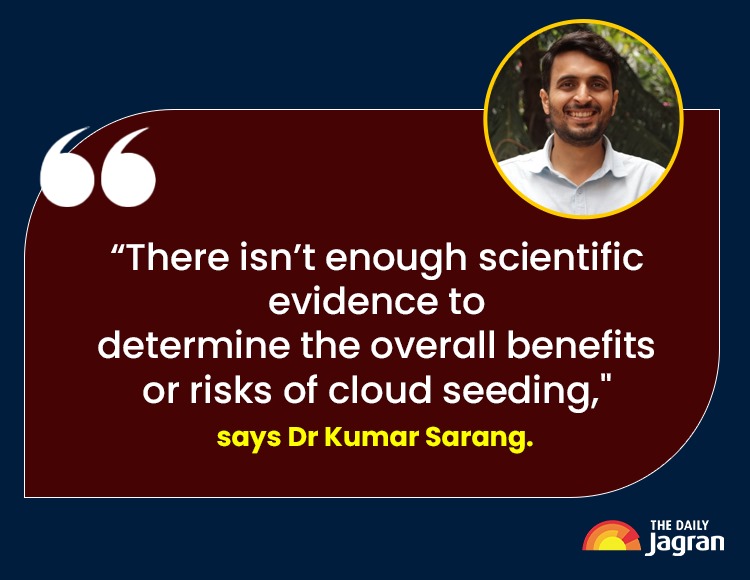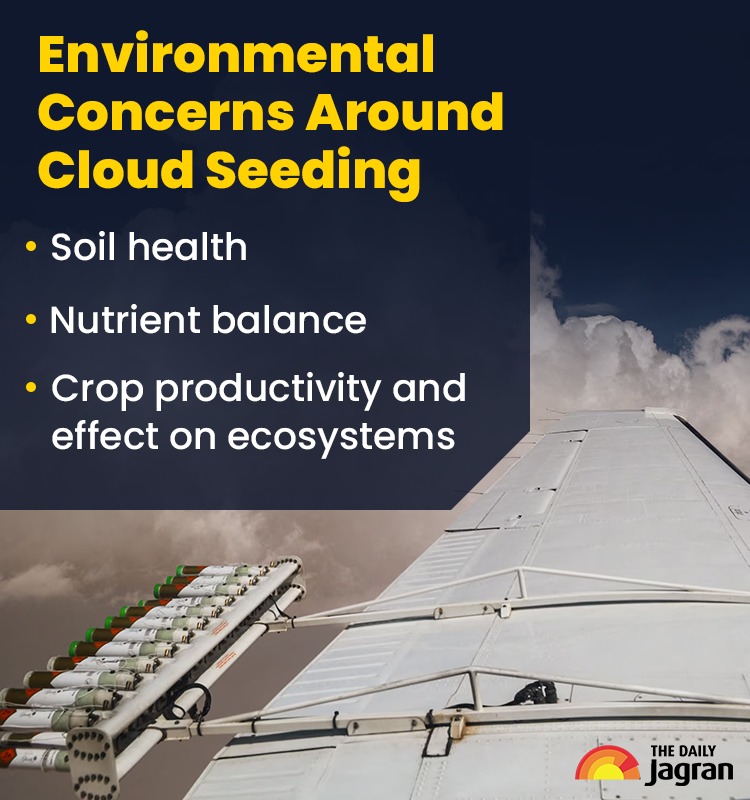- By Nidhi Giri
- Wed, 29 Oct 2025 06:29 PM (IST)
- Source:JND
Smog Stories: Delhi's artificial rain trial for October 29 was put on hold following unsuccessful attempts a day earlier to induce rainfall through cloud seeding in the national capital. The experiment, aimed at reducing pollution levels and improving air quality, faced setbacks as the conditions were not favourable for rain formation. While cloud seeding has been used globally and shown mixed success, Delhi’s ongoing trials did not yield the desired results.
The Daily Jagran spoke to Dr Kumar Sarang, Senior Associate in the Air Quality Observations group at Center for Study of Science, Technology and Policy (CSTEP) and Polash Mukerjee, Independent Air Quality, Climate and Health Researcher to gain clarity on this long-studied technology. The article also includes inputs from Dr Thara Prabhakaran, Scientist at Indian Institute of Tropical Meteorology, Pune.
What Is Cloud Seeding?
Cloud seeding is a technique meant to make clouds produce more rain. To do this, tiny particles called "seeds" are added to suitable clouds. "Cloud seeding is a weather modification technique that involves injecting artificial water-loving salt particles into clouds. These particles act as seeds (condensation nuclei) on which the water droplets or ice can stick and grow. When they become heavy enough, they fall to the ground as rain or snow," explains Dr Kumar Sarang.
According to Indian Institute of Tropical Meteorology (IITM), Pune, the "seed" particles can be:
- Cloud Condensation Nuclei (CCN): Tiny particles that attract water vapour, helping it turn into water droplets
- Ice Nuclei: Particles on which water freezes.
The chemicals used in cloud seeding, include Silver iodide, Potassium iodide (Defelice et al., 2014, Essien, 2023), Sodium chloride (Biswas and Dennis, 1970), Aluminium oxide (Azeez et al., 2024).
As per Dr Kumar Sarang, the seeding particles can be injected into clouds using different modes, such as aircraft, ground-based equipment, or rockets, and through dispersion or use of hygroscopic flares.
When Was Cloud Seeding Discovered?
The technique at the heart of this effort - 'Cloud Seeding' is not new. Developed around 75 years ago in the United States, it was first tried in a lab by scientist Vincent Schaefer in 1946. Later, in 1947, "Project CIRRUS" was started to further study cloud seeding. Under this project, different cloud types were seeded at locations across the US using multiple aircraft on over 100 seeding and observation flights.
Cloud seeding was discovered in the post-World War II era to increase precipitation in drought-prone areas, enhance natural water supply and support agricultural activities. The technique can also help weaken the impact of a hailstorm by reducing the hail size.
ALSO READ: Smog Stories: Why Farmers Burn Stubble Despite Strong Laws? What Are Their Demands?
From US To China, How Cloud Seeding Technique Was Applied Globally
The Indian Institute of Tropical Meteorology conducted a cloud seeding experiment in the '70s, during which no definite conclusions could be made on the efficacy of seeding towards precipitation enhancement, as per a document by IITM.
Though statistically not significant, early experiments suggest enhancement of rainfall due to seeding by 17 per cent; while other experiments were inconclusive, introducing significant uncertainty in the outcome of seeding.
Cloud Seeding has proved helpful in semi-arid and arid regions of Australia (Ryan and King, 1997), the Middle East (Hosari et al., 2021), and a few regions of India (Prabhakaran et al, 2023).
Another study conducted in South Korea showed reductions in PM10 concentrations after cloud seeding.
Polash recalls that China used the technique around the time of Beijing Olympics while Dubai has used it on multiple occasions to curb pollution.
Factors That Determine Success Of Cloud Seeding
Dr Kumar Sarang explained factors affecting the successful implementation of the technique. "Cloud type, prevailing meteorological conditions, type of seeding agent used, and the timing of seeding operations, play a critical role," he said.
Dr Sarang highlighted that although there is currently no conclusive scientific evidence confirming the long-term effects of cloud seeding, studies are underway to examine its applications and impacts more closely.
ALSO READ: Smog Stories: How Delhi’s Construction Boom Fuels Its Pollution Crisis?
Not Enough Evidence To Determine Overall Benefits Or Risks
Dr Kumar Sarang mentioned existing studies (e.g. Bruintjes, 1999) which have questioned the methods used and highlighted the need for a better understanding of cloud processes.
"There are several environmental concerns. Soil and water can be impacted as a result. Silver iodide is commonly used in the process and it is toxic to aquatic life," Polash said, echoing similar sentiment.
(This article is part of the series 'Smog Stories'. To read more articles in the series, click here.)

